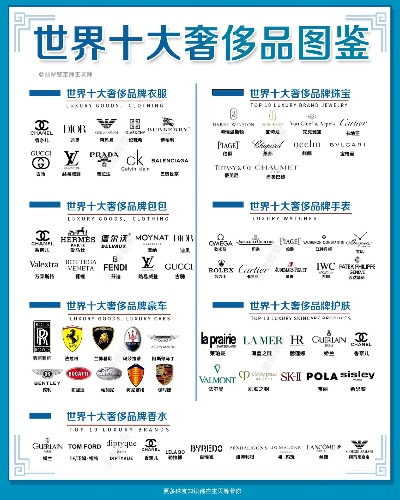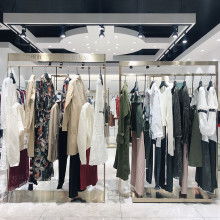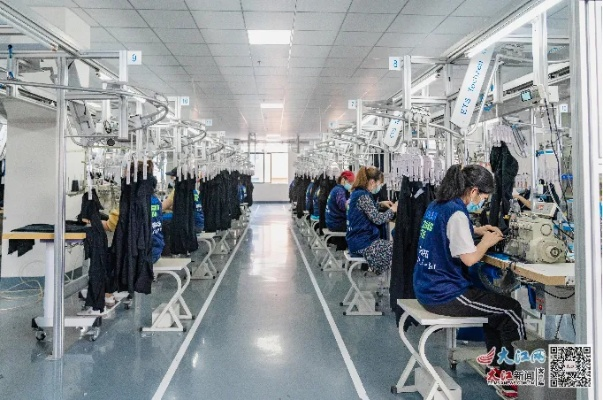The Impact and Benefits of Green Textiles:A Comprehensive Guide
Green textiles are those that are made from sustainable, eco-friendly, and renewable materials. They not only reduce their environmental footprint but also offer a range of benefits to both consumers and the planet as a whole. In this guide, we'll explore the various green textiles, their advantages, and how they are being adopted by various industries.
Table 1: Key Green Textile Materials | Material | Description | Environmental Benefits | |------------|-----------------|-----------------------| | Organic Cotton | Grown without synthetic pesticides or fertilizers | Promotes soil health and reduces water usage | | Recycled Polyester | Made from recycled plastic bottles | Prevents landfill waste and decreases carbon emissions | | Bamboo | Produced from bamboo shoots | Reduces deforestation and promotes biodiversity | | Tencel (Econyl) | Made from wood pulp and cellulose fibers | Reduces energy consumption in production and lowers greenhouse gas emissions |
Table 2: Green Textile Advantages | Advantage | Explanation | |------------|-----------------| | Comfort | Green textiles provide comfort and softness to the wearer | | Durability | Many green textiles are more durable than traditional textiles | | Versatile | Green textiles can be used for a wide range of products | | Eco-friendliness | These textiles are designed to minimize their environmental impact | | Energy Efficiency | Green textiles use less energy during manufacturing and in their life cycle |

Now let's delve into the different types of green textiles and how they're being adopted in various industries:
-
Organic Cotton Organic cotton is produced without the use of harmful chemicals such as pesticides, herbicides, or artificial fertilizers. It's grown using natural methods that respect the environment and promote soil health. This type of cotton is becoming increasingly popular due to its superior quality, breathability, and durability compared to conventional cotton. Brands like Patagonia and Gap now carry organic cotton clothing options.
-
Recycled Polyester Recycled polyester is made from post-consumer plastic waste. This process helps to reduce the amount of waste sent to landfills, which leads to fewer greenhouse gas emissions. Brands like Patagonia and Everlane have started using recycled polyester in their clothing line to promote sustainability.
-
Bamboo Bamboo is one of the fastest-growing plants on Earth and requires significantly less water to grow compared to other crops. It has a strong and durable fiber that makes it a great choice for outdoor gear, clothing, and home furnishings. Brands like The North Face and REI have begun incorporating bamboo into their products to reduce their environmental impact.
-
Tencel (Eco-Friendly Linen) Tencel is an innovative material derived from wood pulp and cellulose fibers. It's made into yarns or fabrics that mimic the feel and texture of natural linen. It's highly absorbent, breathable, and hypoallergenic, making it perfect for use in sportswear, bedding, and upholstery. Brands like Lululemon and Beyond Clothing have started using Tencel in their products to appeal to eco-conscious consumers.
-
Alpaca and Wool Alpaca wool is another sustainable option for clothing and accessories. It's soft, warm, and comes from a naturally resilient animal that doesn't require much care. Brands like Patagonia and Ralph Lauren have been successful in using alpaca wool in their products to create stylish and comfortable pieces.
In conclusion, green textiles are a crucial part of our effort towards sustainability. By choosing products made from sustainable materials, we not only reduce our impact on the environment but also contribute to a healthier planet for future generations. As more companies adopt these practices, we can expect to see even more innovative and sustainable textile solutions in the market.
绿色纺织品概述
绿色纺织品是指采用环保、可持续材料制作,注重环保、健康和可持续性的纺织品,随着人们对环保和健康生活的关注度不断提高,绿色纺织品市场逐渐兴起,以下将以几个典型的绿色纺织品为例,介绍其特点和实际应用。
绿色纺织品案例

天然纤维纺织品
(1)纯棉纺织品
纯棉纺织品是一种常见的绿色纺织品,以其天然、环保、舒适的特点受到广大消费者的喜爱,某品牌推出的纯棉T恤,采用天然纤维棉制作,不含化学添加剂,符合环保要求,该产品不仅透气性好,吸湿性强,而且柔软舒适,适合各种场合穿着。
(2)麻纺织品
麻纺织品是一种天然纤维纺织品,具有抗菌、防臭、吸湿排汗等特性,某品牌推出的麻质睡衣,采用天然麻纤维制作,注重舒适性和透气性,适合夏季穿着,该品牌还推出了麻质窗帘、地毯等家居用品,体现了绿色纺织品的广泛应用。
再生纤维纺织品
(1)再生涤纶纺织品
再生涤纶纺织品是一种利用废旧涤纶纤维再生制成的纺织品,该产品具有环保、可持续的特点,符合现代人们对环保和可持续发展的需求,某品牌推出的再生涤纶衬衫,采用先进的再生技术制作,不仅外观时尚,而且穿着舒适,符合人体工程学设计。
(2)竹纤维纺织品
竹纤维纺织品是一种利用竹子纤维制成的纺织品,该产品具有天然、环保、健康的特点,受到了越来越多消费者的青睐,某品牌推出的竹纤维床单、毛巾等家居用品,不仅环保健康,而且吸湿性强,适合各种气候条件下的使用。
绿色纺织品特点及应用领域

绿色纺织品具有环保、健康、可持续等特点,广泛应用于服装、家居用品、装饰品等领域,以下将从几个方面介绍绿色纺织品的特性和应用领域。
环保特性
绿色纺织品注重环保、健康和可持续性,采用环保、可持续的材料制作,符合环保要求,绿色纺织品还注重产品的可回收性、可降解性等特性,有利于环境保护和可持续发展。
健康特性
绿色纺织品注重产品的舒适性和健康性,采用天然纤维和再生纤维等环保、健康的材料制作,适合各种场合穿着,例如纯棉和麻质纺织品具有吸湿性强、透气性好等特点,适合夏季穿着;再生涤纶和竹纤维纺织品则注重舒适性和健康性,适合各种人群使用。
应用领域
绿色纺织品的应用领域非常广泛,包括服装、家居用品、装饰品等领域,在服装领域,绿色纺织品可以应用于衬衫、T恤、裤子等衣物;在家居用品领域,绿色纺织品可以应用于床单、毛巾、窗帘等家居用品;在装饰品领域,绿色纺织品可以应用于壁画、摆件等艺术品,随着人们对环保和可持续发展的需求不断提高,绿色纺织品还将应用于其他领域,如汽车内饰、电子产品等。
表格补充说明(以具体案例为例)
以下是具体案例的表格补充说明:
| 案例名称 | 材料类型 | 产品描述 | 应用领域 | 相关数据 |
|---|---|---|---|---|
| 纯棉T恤 | 天然纤维棉 | 采用天然棉制作,不含化学添加剂 | 服装、家居用品 | 透气性好、吸湿性强 |
| 麻质睡衣 | 麻纤维 | 采用天然麻纤维制作,注重舒适性和透气性 | 夏季穿着 | 抗菌防臭、吸湿排汗等特性 |
| 再生涤纶衬衫 | 再生涤纶纤维 | 采用先进的再生技术制作 | 服装 | 环保、可持续性 |
| 竹纤维床单 | 竹子纤维 | 利用竹子纤维制成床单等家居用品 | 家居用品 | 天然环保、健康特性 |
| 再生涤纶毛巾 | 再生涤纶纤维 | 采用可回收性强的材料制作 | 家用洗涤用品 | 可回收利用、环保健康特性 |
绿色纺织品是现代人们追求环保和可持续发展的必然选择,本文以几个典型的绿色纺织品为例,介绍了其特点和实际应用,随着人们对环保和健康生活的关注度不断提高,绿色纺织品的市场需求将会越来越大,绿色纺织品的研发和应用将会更加广泛和深入。
Articles related to the knowledge points of this article:
The Art of Crafting Coziness with Wool and Texture
Top Ten Brands of Textile Waterproofing Agents in the Waterproofing Market



